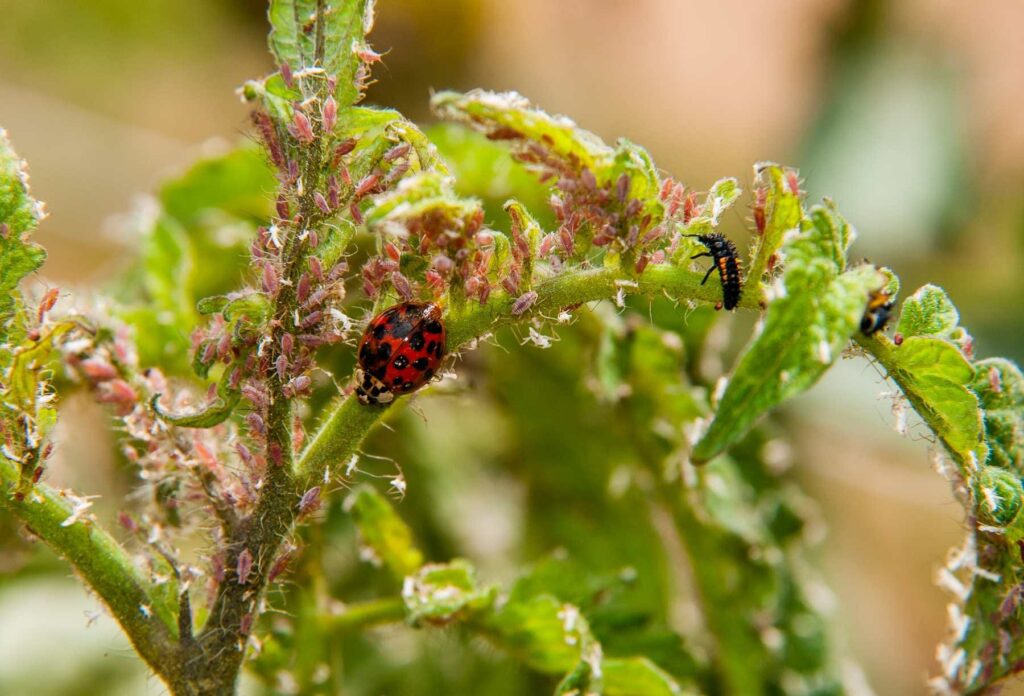Biological Control
Biological control (or biocontrol) is an important component of integrated pest management programs where living organisms are used by a human stakeholder to suppress the population of a specific pest, making it less abundant and less damaging than it would otherwise be.
Types of biological control:
- Natural biological control: Populations do not require human intervention
- Conservation biological control: Resident natural enemy populations require human intervention
- Augmentative biological control: Non-resident populations are introduced but not expected to establish long-term
- Classical biological control: Non-resident populations are introduced and expected to establish long-term
Management of pests in CEA typically requires the use of non-resident natural enemy populations, as CEA facilities are semi- or completely closed systems that do not support the emigration of natural enemies from the surrounding environment. Common beneficial organisms include:
- Generalist predators (e.g., Orius insidiosus for whiteflies and thrips)
- Predatory specialists (e.g., Phytoseiulus persimilis for mites)
- Parasitic wasps (e.g., Aphidius ervi for aphids)
- Entomopathogenic nematodes (e.g., Steinernema feltiae for fungus gnats and thrips)
- Entomopathogenic fungi (e.g., Cordyceps javanica for many soft-bodied insects)

